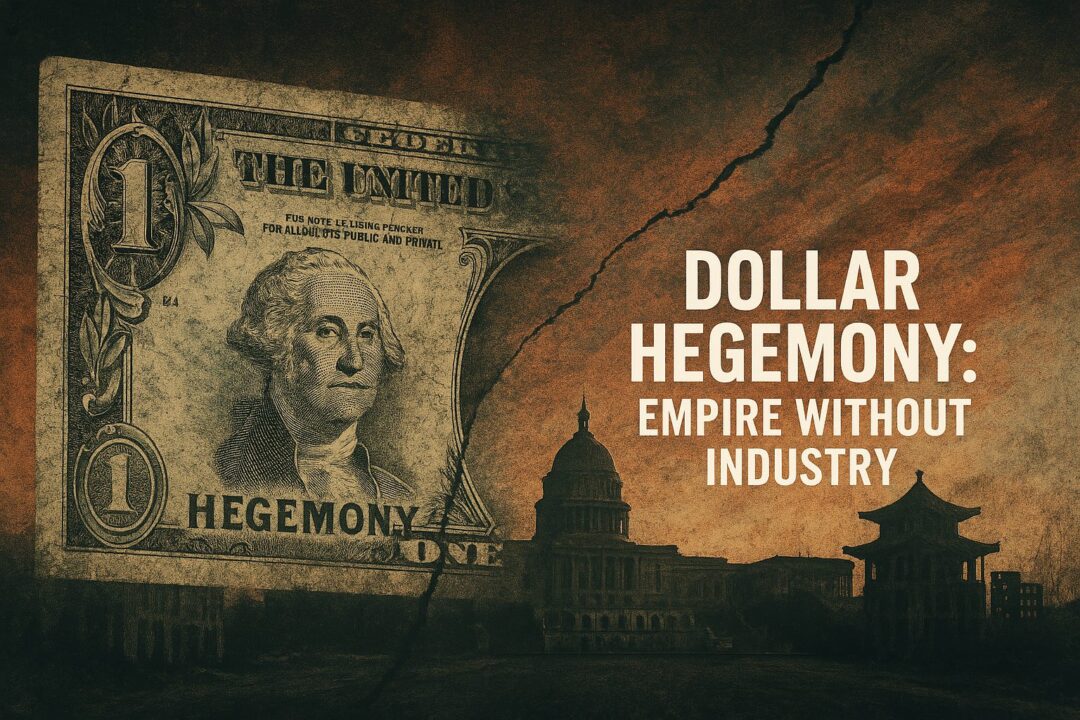While governments around the world rush headlong into Central Bank Digital Currencies (CBDCs), desperately trying to future-proof their monetary systems, one nation stands apart — not by falling behind, but by playing a different, far smarter game.
That nation is the United States.
To the casual observer, the U.S. appears to be dragging its feet on a digital dollar. Politicians are rejecting it, states are banning it, and public rhetoric is full of fear about government overreach, surveillance, and loss of financial freedom.
But behind the scenes, the U.S. is doing something far more powerful:
It is letting private dollar-backed stablecoins do the job of a CBDC — and it’s winning.
This isn’t a retreat. It’s a strategy.
And it’s working.
The Global CBDC Arms Race
All over the world, central banks are racing to digitize their national currencies:
- The European Central Bank is sinking enormous political capital into launching the digital euro
- China has already rolled out its digital yuan, complete with programmable features and pilot programs in major cities
- Dozens of other countries are piloting or developing CBDCs, hoping to modernize payments, assert sovereignty, or keep up with the pack
But there’s a fundamental problem with this global push:
Most of these currencies are not in demand.
Unlike the U.S. dollar, currencies like the euro, yuan, or rupee are not used globally as reserve assets, trade mediums, or remittance anchors. They don’t have global trust, liquidity, or institutional integration. They are domestic-first currencies trying to go digital without ever having gone global.
A digital version of a weak or limited fiat currency doesn’t make it stronger. It just makes it more programmable.
The U.S. Anti-CBDC Rhetoric: Strategy, Not Ideology
From the outside, it might seem like the U.S. is ceding ground:
- Donald Trump, along with other prominent politicians, has openly opposed a digital dollar
- Multiple U.S. states have legislated against CBDCs, citing constitutional and privacy concerns
- The messaging is consistent: CBDCs are a threat to freedom, privacy, and the foundational values of America
But here’s the deeper reality:
This isn’t hesitation. It’s positioning.
By loudly opposing a government-issued CBDC, the U.S. achieves several key goals:
- It makes authoritarian regimes like China look dystopian
- It casts Europe’s CBDC efforts as controlling and out of touch
- It aligns the dollar with liberty, innovation, and market-driven trust
- It avoids the political mess of launching a federal surveillance coin
Meanwhile, in the background, the U.S. is encouraging — and heavily benefiting from — the rise of dollar stablecoins.
Dollar Stablecoins: The Trojan Horse
Stablecoins like USDC, USDT, and the newer wave of tokenized U.S. Treasuries are doing what a U.S. CBDC would have done — but with far less resistance:
- They are globally adopted
- They are instant, borderless, and dollar-pegged
- They are compliant, with built-in freezability and sanction mechanisms
- They can already be regulated, traced, or even programmed under existing legal frameworks
In other words:
Dollar stablecoins are functionally CBDCs — just privately branded.
And they’re far more effective. Because:
- People trust them
- Markets use them
- Developers build with them
- Exchanges, payment apps, and fintechs integrate them natively
No fanfare. No votes. No public backlash.
Just quietly, steadily, the U.S. has exported the digital dollar to the entire world — through private innovation.
Europe and China: Playing Checkers While the U.S. Plays Chess
Now contrast that with Europe:
- The digital euro is being designed with holding limits, no yield, and privacy concerns
- Citizens are skeptical, politicians are divided, and banks are defensive
- It’s being built from the top-down — a government product in a free market
And with China:
- The digital yuan is programmable, traceable, and already being used to test social control and behavioral nudges
- Its global uptake is limited — because the yuan isn’t trusted as a global reserve asset
Meanwhile, U.S. dollar stablecoins are:
- Dominating global crypto markets
- Being adopted in emerging economies where local currencies are collapsing
- Integrated into global finance — from remittances to savings platforms to trade settlements
The result?
The U.S. doesn’t have to force a CBDC on its people.
It’s already winning the digital currency war — through demand, not decree.
If the U.S. Ever Wants a CBDC, the Infrastructure Is Already Built
This is the most clever part of all.
If, in the future, the U.S. government decides it wants a digital dollar that it controls directly:
- It already has stablecoin infrastructure in place
- It already has onramps, adoption, and standards
- It could require licensing, compliance, or public-private partnerships to convert stablecoins into a formal CBDC
In other words, the U.S. is building a CBDC without calling it a CBDC.
It’s using market-driven innovation to do what other governments are trying (and failing) to do through central planning.
The World Is Choosing the Dollar — Again
Stablecoins have made one thing clear:
The world still wants dollars.
Not euros. Not yuan. Not rupees. Not CBDCs.
Dollars. In digital form. On fast rails. Globally accessible.
That’s the true lesson here. The dollar isn’t dying — it’s being upgraded.
And the U.S., instead of launching a centralized, top-down CBDC, is letting the free market digitize the dollar — and giving it global superpowers.
It’s a strategy that’s:
- Politically savvy
- Technologically smart
- Geopolitically dominant
While others centralize and alienate their populations, the U.S. is exporting freedom-branded money — and embedding it into the future of finance.
Conclusion: The Smartest Move Is the One No One Notices
CBDCs may still dominate headlines, but they’re not winning hearts or markets. The U.S. knows this. It’s leveraging public anti-CBDC sentiment as a shield, while stablecoins quietly do the work of digital monetary expansion.
It’s not just clever. It’s strategic genius.
The dollar’s digital future isn’t coming. It’s already here.
It just doesn’t look like a CBDC — and that’s exactly the point.
Discover more from Brin Wilson...
Subscribe to get the latest posts sent to your email.



